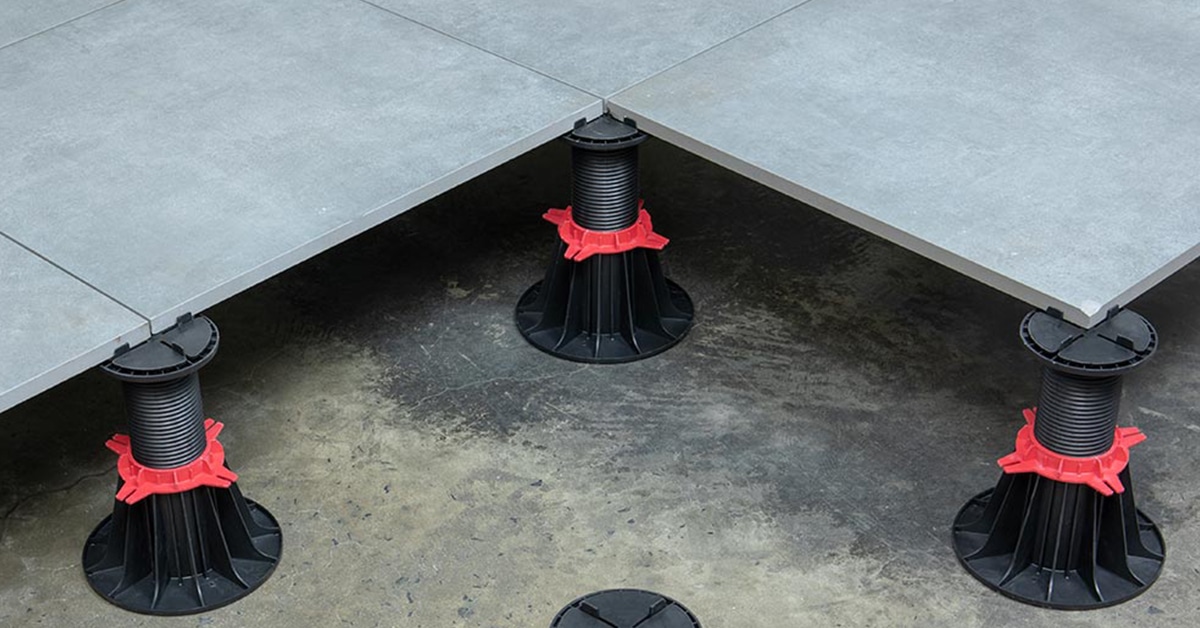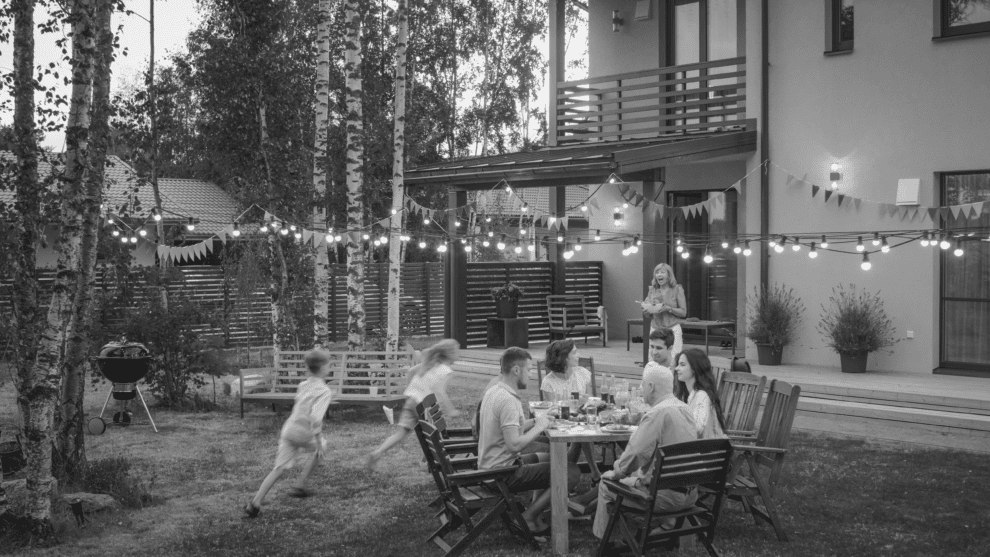A practical guide to ventilating your terrace on adjustable pedestals
Introduction
Ventilation is a crucial aspect to consider when building a terrace on adjustable pedestals. Good ventilation ensures the longevity of your deck by allowing air to circulate freely beneath the wood boards or slabs, thus avoiding problems of dampness, rot and warping. In this article, we’ll give you some practical advice on how to ensure proper ventilation of your decking on adjustable pedestals.
-
Why is ventilation important?
Ventilation plays a crucial role for two main reasons:
Firstly, it prevents the build-up of moisture, which encourages the growth of various molds and wood-rotting fungi. Although these do not damage the structure of the wood, they do cause aesthetic inconveniences such as moss formation and other problems.
Secondly, it regulates humidity inside the wood, minimizing moisture and temperature disparities between the exposed surface and the underside. This helps to limit dimensional variations in the wood.
-
Create openings
For a terrace to last, it must be able to breathe. To guarantee this, it is necessary to create a system that allows air to circulate freely beneath the deck. To achieve this, the decking must have at least two openings to create a draught. That’s why it’s important not to close your deck completely. You can opt to install a deck edge board to conceal the structure, but be sure to leave a gap to allow ventilation, or you can install a ventilation grille if you decide to close all sides. Ideally, it’s best to have an opening on two opposite sides to ensure optimum air circulation.
Once air has penetrated under the deck, it will find an outlet through the space between each board. As well as acting as a reservoir to compensate for dimensional variations in the deck boards, this space between boards acts as a means for air to escape. It is essential to note that this space must never be used as an air intake!
-
Choose quality adjustable pedestals
The ventilation of a terrace on pedestals depends largely on the quality of the adjustable pedestals used. Choose blocks made from durable, weather-resistant materials. They must also be height-adjustable, so that the terrace can be perfectly adjusted to the constraints of the terrain, and to ensure a gentle slope for water run-off.
-
Respect spacing between boards or slabs
When installing your deck, be sure to observe the recommended spacing between boards or slabs. These spaces allow air to circulate freely beneath the surface, preventing moisture build-up and mold formation. Generally speaking, a spacing of 5 to 7 millimeters is recommended for wooden boards.
-
Use blades spacers to ensure even ventilation
To ensure even ventilation of your deck, use blades spacers between boards or slabs during installation. These spacers ensure even, constant spacing, allowing air to circulate evenly under the entire deck surface.
-
Choose the right materials for your terrace
Some decking materials are more conducive to good ventilation than others. Wood is an excellent choice, as it is naturally permeable to air. If you opt for stone or ceramic tiles, make sure they are perforated to allow good air circulation.
-
Slightly raise the perimeter of the pedestals
When installing the adjustable pedestals, remember to slightly raise the pedestals around the edge of the terrace. This slight elevation will encourage rainwater to run off towards the outside, rather than allowing it to collect under the terrace.
-
Maintain your terrace regularly
Once you’ve installed your terrace on adjustable pedestals, regular maintenance is essential to ensure good ventilation over the long term. Regularly clean the spaces between the boards or slabs to remove any debris that could obstruct air circulation. Also check the condition of the studs and replace any that may be damaged or worn.
Conclusion
Ensuring good ventilation for your terrace on adjustable pedestals is essential to preserve its durability and beauty. By following these practical tips, you can be sure of a hard-wearing terrace that will remain in perfect condition for years to come. Investing time and effort in careful installation and regular maintenance will enable you to enjoy your outdoor space with complete peace of mind.

